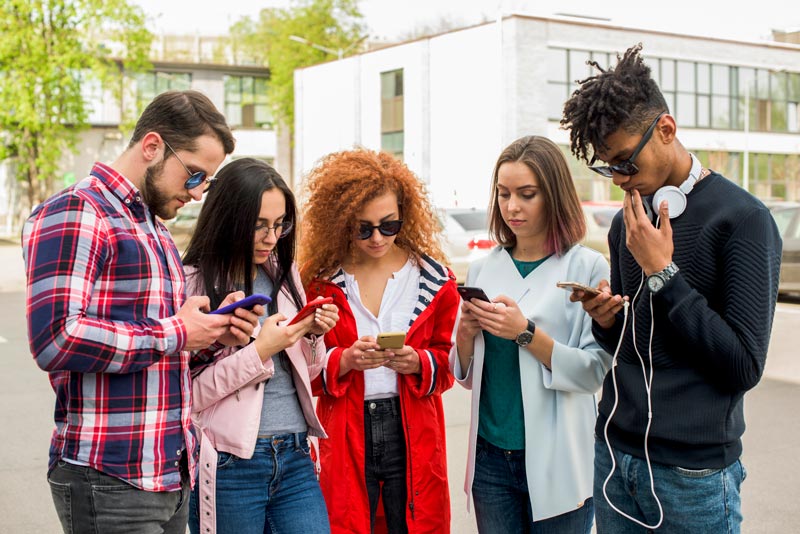There’s an old saying in New Orleans: “If people aren’t talking about you, you probably haven’t done anything worth talking about.” The same logic applies to marketing. In 2025, with everyone’s attention span roughly the length of a TikTok clip, the only way an ad survives is if it sparks a conversation.
And not just any conversation—the kind where people are laughing, tagging their friends, and saying, “This is so you.” That’s the gold standard of modern advertising. Because once the audience starts doing the talking, the hard work is already done.
The Attention Span Apocalypse
Let’s face it: nobody watches commercials anymore unless they accidentally hit the wrong button on YouTube. The average person scrolls faster than a jazz drummer’s snare roll. So how does a message survive in a world where everyone’s thumb is moving like it’s late for work?
Simple. Make it impossible to ignore.
It doesn’t have to be expensive, flashy, or packed with buzzwords—it just has to feel human. People are naturally wired to react to things that make them laugh, think, or nod in agreement. The second an ad hits that nerve, it jumps from being “marketing” to “content worth sharing.”
Why Conversation Beats Conversion
There was a time when every marketer talked about “conversion rates.” Those days are gone. Sure, conversions still matter, but conversation is what fuels them. It’s the difference between an ad that’s forgotten by lunchtime and one that gets screenshotted, shared, and turned into memes.
When people talk about an ad, it gains a heartbeat. It’s not some corporate message—it’s part of the culture. The key is to create something relatable enough that the audience wants to make it their own.
And that’s where the fun begins.
The “Tag Factor”
The tag is today’s handshake. When someone tags a friend, they’re saying, “Hey, this made me think of you.” That one tiny gesture does more than any sponsored post could ever do. It instantly expands reach, adds authenticity, and, best of all, doesn’t cost a dime.
At Jambalaya Marketing, campaigns are built around what I like to call “tag triggers.” That’s the moment when someone feels compelled to tag someone else—because the content hit a nerve. It might be a joke about Louisiana weather, a relatable workplace meme, or a picture so true it hurts a little.
If the post makes someone laugh, roll their eyes, or say, “That’s my cousin Larry,” then the mission is accomplished.
The Humor Hack
Humor is the most powerful advertising tool on earth, especially down here in New Orleans where everyone has a story and none of them are short. Funny content disarms people—it sneaks past the part of the brain that says, “This is an ad” and goes straight to the part that says, “That’s hilarious.”
But humor is tricky. Go too far, and it’s cringe. Play it too safe, and it’s invisible. The sweet spot is right in the middle: clever enough to stand out, but real enough to feel natural.
Think about the best ads people remember—they’re the ones that made them chuckle, nod, and hit share. Nobody says, “Wow, that was an incredibly well-structured call to action.” They say, “That’s funny,” and then they send it to five people.
Real Over Perfect
Here’s another secret: the internet doesn’t want perfect anymore. It wants real. A slightly shaky video from a local business that makes people laugh will outperform a polished, expensive production every time.
The more “human” an ad feels, the better it performs. Real voices, real faces, and even real mistakes make people lean in. The audience isn’t looking for perfection—they’re looking for something that feels alive.
When a message feels authentic, it earns trust. And trust, as it turns out, is the one thing algorithms can’t fake.
The Local Advantage
In New Orleans, local flavor always wins. Whether it’s food, music, or advertising, people here respond to authenticity. A campaign that celebrates the city’s quirks—the potholes, the festivals, the constant humidity—will always hit harder than something generic.
That’s the beauty of living and working in a city like this. Every street corner has a story. Every person is a character. The trick is to bring that same energy into the marketing. When people see something that feels uniquely theirs, they don’t just notice it—they claim it.
That’s when a campaign stops being “marketing” and becomes a movement.
Technology Can’t Replace Personality
Artificial intelligence can write headlines, predict engagement, and even generate video—but it can’t fake personality. Algorithms can’t understand what makes a New Orleanian laugh during Mardi Gras or why a certain song lyric hits different when it’s played on Frenchmen Street.
The heart of good advertising isn’t data—it’s humanity. Technology helps deliver the message, but personality gives it power.
Conversation Is the New Currency
In the end, advertising that sparks conversation is advertising that works. The goal isn’t to shout louder—it’s to speak smarter. When people start tagging, laughing, debating, or telling stories in the comments, the message has officially taken on a life of its own.
That’s when marketing stops being a transaction and becomes a connection. And if there’s one thing this city knows, it’s that connection is everything.
So the next time a post goes live, don’t just count the likes—listen for the conversation. If people are talking, it means something’s working. And in a world that never stops scrolling, getting people to stop, laugh, and tag a friend is still the best magic trick there is.



